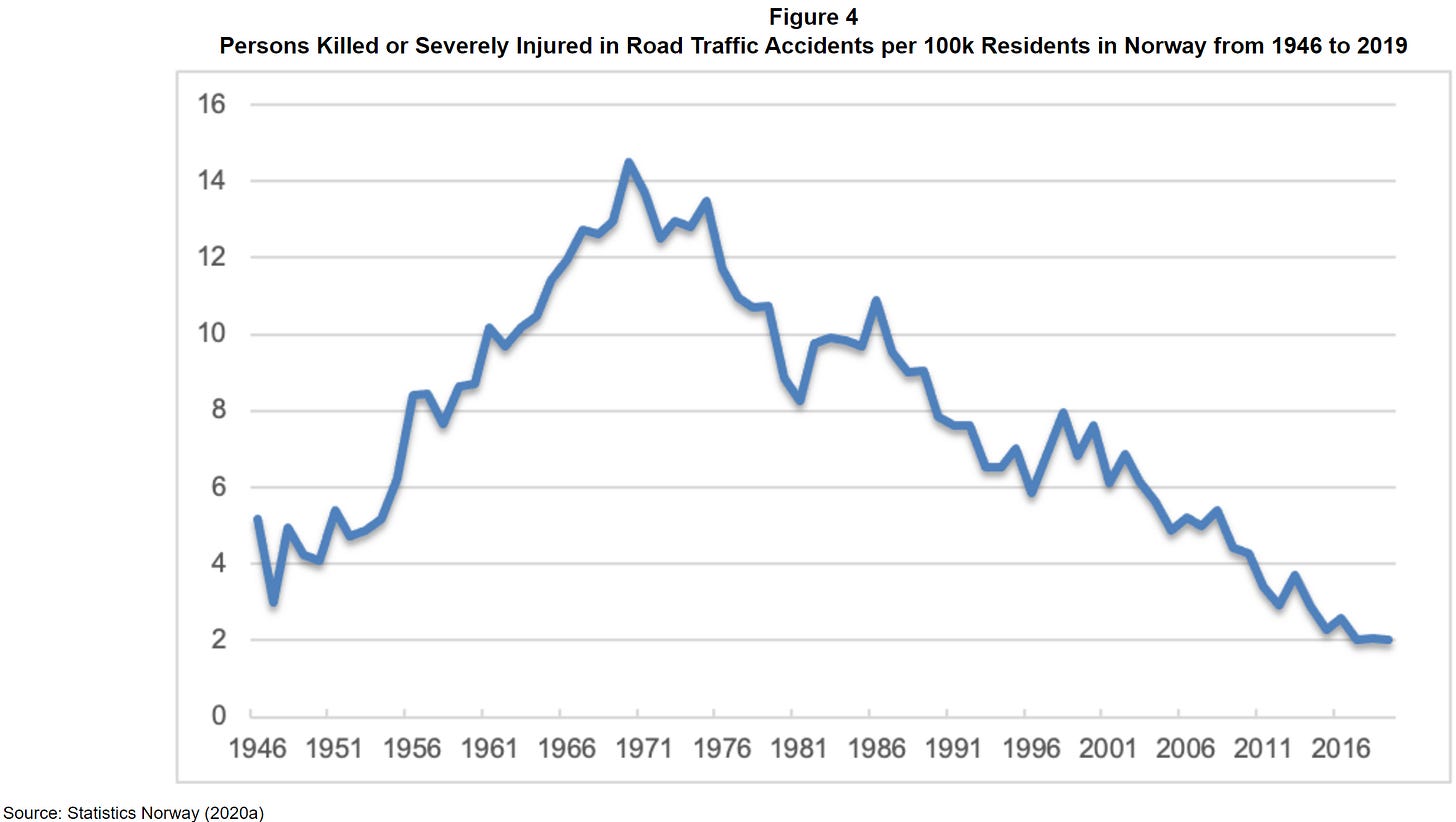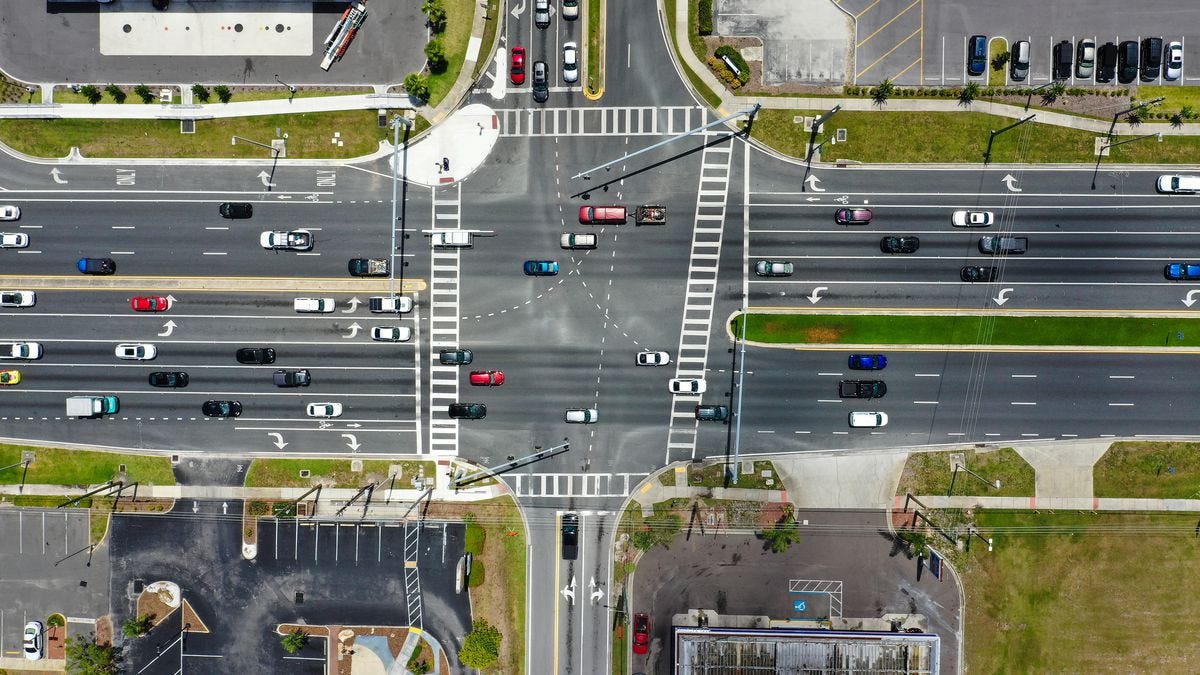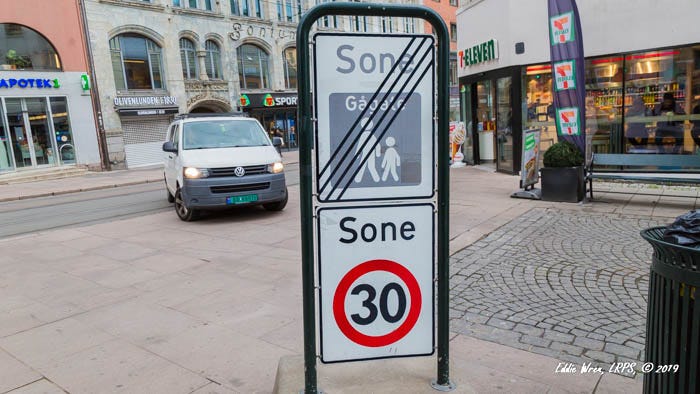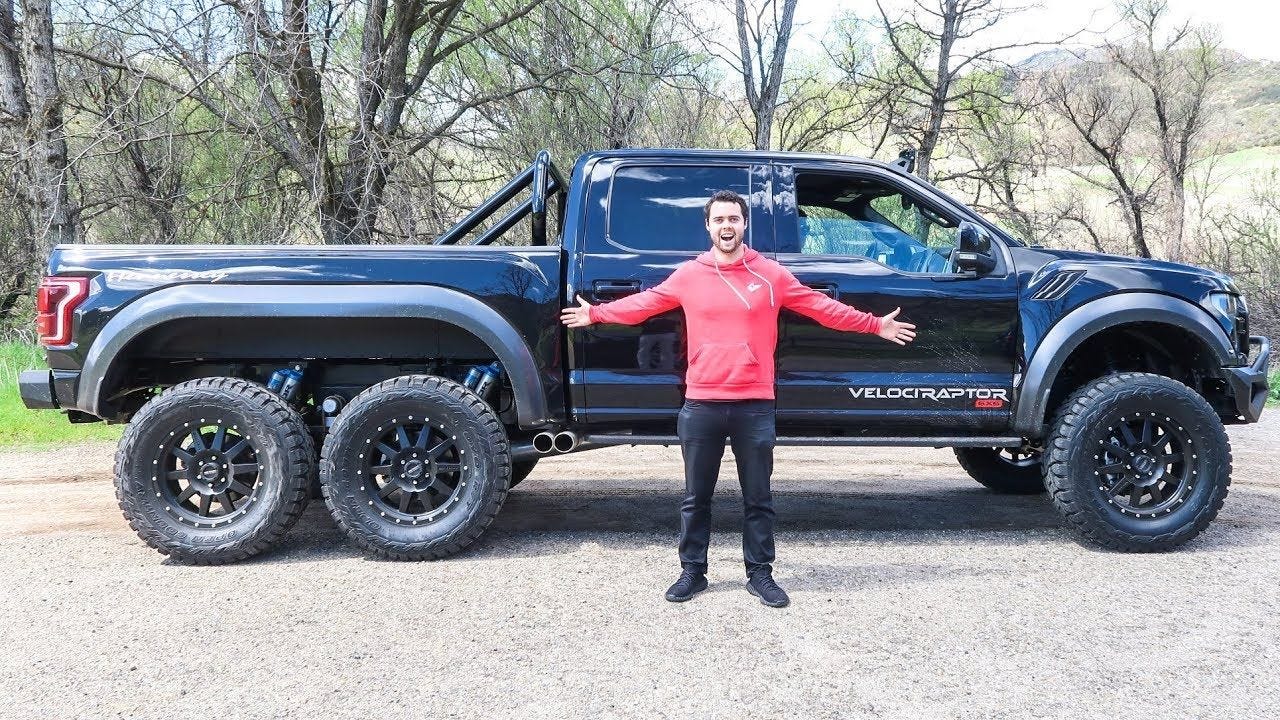“Vision Zero” has been adopted all across the world, from New York City to Haryana, India. However, it has had extremely mixed results, with traffic deaths in the US continuing to rise even as many parts of the country adopt Vision Zero. At the same time, traffic deaths are falling in other developed nations. So, what’s going on?
What exactly is Vision Zero, anyway?
To understand what’s going on, we have to first understand what Vision Zero is and what it isn’t. Vision Zero, is, at its core, a guiding principle that was first adopted in Sweden in the 1990’s, where a road safety bill declared that “no one should be killed or seriously injured within the Swedish road transport system, and the structure and the function of the road transport system must be brought into line with the demands this goal entails.”
Similarly, Norway has defined Vision Zero as:
Vison Zero is thus both an ethical guide and a guideline for further traffic safety work in Norway. This means, among other things, that the transport system, means of transport and regulations for behaviour must be designed in a way that promotes safe behaviour among road users, and contributes as much as possible to human error not leading to serious injuries or death.”
Vision Zero is not a specific policy or regulation that makes the roads safer. Rather, it is a values statement, a declaration of priorities: that improving safety takes precedence over other concerns, namely, speed and convenience. Furthermore, it’s an acknowledgment that even though any specific crash can be blamed on human error, bad weather, etc., policymakers and regulators can create a road system where those errors are less likely and less costly.

And these Scandinavian countries have been extremely successful in implementing Vision Zero. Norway has seen traffic deaths fall from 500/year in the 1970’s to a record low of 80 deaths in 2021. For contrast, South Carolina has a slightly smaller population than Norway and saw 1,179 traffic deaths in 2021. In 2021, South Carolina had 15x as many deaths per capita as Norway. The US is so incredibly far behind the rest of the developed world in preventing traffic deaths, with the cost of tens of thousands of lives lost unnecessarily, with hundreds of thousands more injured every single year.
Why has America failed to reduce traffic deaths and how can we fix it?

To truly achieve Vision Zero and significantly reduce traffic deaths, we will need leadership from our elected officials to not just spend money, but adopt more aggressive policies that may inconvenience drivers, because it’s worth it to save lives. I recently spent a week in Stockholm and Oslo and came back with a series of takeaways from two cities that have successfully adopted Vision Zero (Oslo had zero traffic deaths in 2021 while Oklahoma City, a similarly sized American city, had 87 deaths.)
Lower speed limits!
When it comes to traffic violence, speed kills. In Stockholm and Oslo, the most common speed limit is 30 km/h, where a collision with a pedestrian has less than a 10% chance of being deadly. However, throughout American cities, many large arterial roads have speed limits of 40mph, where the chance of a crash being fatal is exponentially higher. Even in New York City, the city needs permission from the state to lower the speed limit to 20mph, and for some inexplicable reason, Assembly Speaker Carl Heastie refuses to allow a vote on the bill that would allow that. (This bill is called “Sammy’s Law” after a young boy who was killed by a car in Brooklyn. If you live in New York, please call your elected officials and ask them to support the bill)
Better enforcement of traffic laws!

Up until 2022, New York was only allowed to turn speed cameras on during weekdays. There was much less speeding when the cameras were on(represented by the area inside the black box above). Lower speed limits are not very effective if most cars just speed anyway with impunity. That’s why most European countries have speed cameras everywhere that make sure cars follow the posted speed limits (when we were in France, my dad refused to believe this and ended up with many fines at the end of our trip). And it works: speed cameras are proven to save lives and reduce medical costs, making them one of the highest-value public health interventions from a cost/benefit analysis. However, in California, speed cameras are illegal. Even in cities that want to install speed cameras, the state forbids them. As a result, speeding is extremely common in many cities in California, and police officers in San Francisco have basically stopped enforcing traffic laws for some reason (the number of traffic citations has dropped over 90% in the past 10 years, and many are suspecting that SFPD is doing it in a backlash to criticism of the police force). It’s no coincidence that San Francisco has seen a surge in traffic deaths over the past decade. There is reason for hope, though: AB645 in California would create a pilot program to legalize speed cameras. If you live in California, please contact your state Senator and ask them to support the bill. While some progressives are misguided and say that it’s unjust to enforce traffic laws, the opposite is true: it’s unjust to let dangerous drivers operate with impunity until they hurt/kill someone.
Safer Cars!
Heavier cars are more dangerous for pedestrians (and other cars around them). A recent study found that for every 1,000 pound increase in vehicle weight, the risk of pedestrian death in an accident rises by 47%, with an even greater increase for trucks and SUVs. As a result, the societal cost of heavier vehicles is $93 billion every year, an astronomical amount. And there are plenty of additional negative externalities from heavier cars, as road wear increases at the fourth power of weight. That means a 6,000 pound Cadillac Escalade causes 16 times as much road damage as a 3,000 pound Honda Civic. Additionally, the shape of cars is important, as many trucks and SUVs have extremely high hoods that reduce visibility and impact pedestrians higher in the body, closer to critical organs. The National Highway Traffic Safety Administration estimates that pedestrians struck by a pickup truck or SUV are 2-3 times as likely to be killed. There are a range of policy interventions that can address this:
Currently, the New Car Assessment Program (NCAP) used to evaluate a car’s safety doesn’t even consider the impact to people outside a vehicle. This is a federal regulation that Secretary Buttigieg could easily change to include testing, ratings, and safety standards for people outside a vehicle, particularly bikers and pedestrians.
Currently, the Corporate Average Fuel Economy (CAFE) standards treat light trucks (SUVs/Pick-ups) and cars differently, with more lax fuel economy standards for light trucks. As a result, automakers are incentivized to build trucks over smaller cars, even though they have worse fuel economy on average. This is a classic example of a poorly designed regulation that is incentivizing the opposite behavior of what is intended. Again, Secretary Buttigieg has leeway to adjust these standards to make them more effective.
Tax heavier cars! They have a ton of costs (increased emissions, increased danger to pedestrians, and increased road wear) borne by society at large. Many countries, such as pedestrian safety leader Norway already tax vehicles by weight to partially internalize these costs. In the US, Washington DC has already increased registration fees for heavy cars. And New York State is considering a bill to adopt a similar policy. Call up your state and local legislators and ask them to adopt a similar policy (especially if you’re in New York) - and it actually raises revenue while making the streets safer!
Implement speed governors and passive alcohol detection! The Bipartisan Infrastructure Bill calls for, by the end of the decade, mandating new cars to include passive sensors that can detect when a driver is impaired and shut down the car. This is a great idea and should be taken further. There is no reason that someone should ever be driving significantly over the speed limit. We have governors capping e-bikes and electric scooter speed, and we should have the same technology mandated for cars. In the worst-case scenario that someone is in a life-threatening emergency and needs to speed to the hospital, there could be a governor override that automatically alerts emergency services so that it is not abused.
Finally, we should ban lifted pickup trucks without a commercial license. Almost nobody needs a lifted pickup truck. And they make you look like a tool.

US-19, the Deadliest Road in America Safer Roads! We have designed a lot of roads that are extremely dangerous, it’s as simple as that. We know that smaller roads, bike lanes, and better sidewalks all save lives. And yet, America refuses to incorporate these best practices in many places, largely because they can slightly inconvenience drivers. As a result, we have many extremely wide roads where cars travel extremely fast and many people die. I do not think that this trade-off is worth the cost of lives lost. When you look at the most dangerous roads in the country like US-19 above, the design clearly prioritizes speed ahead of safety. We must reject that.
Better Training! Driving is fundamentally a pretty dangerous activity! You are asking most people to operate heavy machinery every day. Many of those people haven’t been trained sufficiently and operate the machinery while intoxicated or distracted. Even though that would get you fired from a factory job, it’s part of everyday life for most Americans. Other countries have far more stringent training and testing than the US, and evidence has shown that requiring more training for a divers license makes the roads safer. But that’s just half of the equation. Driving recklessly endangers the lives of yourself and others around you, and we need harsher penalties to both discourage this type of driving and keep dangerous drivers off the road.
Less Driving! Since cars are responsible for the vast majority of deaths on the road, the easiest way to reduce road deaths is simply by… reducing driving. Studies show that places where people drive less have fewer road deaths. Americans drive far more than any other country in the world, in large part because we have built our environment around cars. But the urbanist playbook of legalizing denser housing and building more transit can help reduce driving and therefore reduce road deaths.
Political Courage! If there’s one common link across all of these policies it’s that they may be unpopular amongst car owners who do not think critically about the issue. That’s why we need our elected officials, from Sec. Buttigieg to small-town mayors, actively making the case for policies that may cause a marginal inconvenience, but will save lives. Not everyone will agree with that tradeoff, but I think that most people will. We can save so many lives if we are successful.
Parallels to Gun Violence
I also want to close this piece by connecting gun violence and traffic violence. Both are uniquely American problems, relative to other developed countries. And both require systemic solutions. For example, both cars and guns kill around 45,000 people in America every year. Why? Because we refuse to adopt legislation that might make it harder for a gun or car to hurt someone because convenience for car and gun owners is prioritized above all else. The defense of cars and guns is usually couched in rhetoric around “freedom”, but I think that the freedom to live a life not cut short by pointless violence outweighs the freedom to operate deadly tools without sufficient regulations and guardrails.







Given that local fire departments are ironically often the biggest defenders of status quo wide arterials and come out against traffic calming, it’d be interesting to see an international comparison of the FD attitudes towards traffic safety in successful Vision Zero countries. Do FD’s in Norway, for example, not have veto power over DOT safety projects? How much time do they spend responding to car crashes compared to the US? Are their response times faster?
Great summary! Hard to imagine the average American driver actually following a 30km/h city speed limit (18mph!) when it’s so routine to folks speeding at 30-35mph through residential areas. But doesn’t mean we shouldn’t try